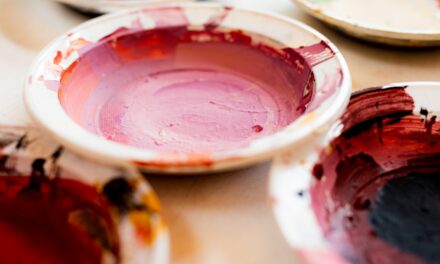Calligraphy, the art of beautiful writing, is deeply rooted in history and tradition, and the tools used in this craft are as varied as the styles themselves. At the heart of calligraphy are the pens, which come in several types, each designed to produce distinct effects. The most common types of calligraphy pens include dip pens, fountain pens, brush pens, and even digital styluses.
Dip pens are often favoured by traditionalists for their versatility and the control they offer over ink flow. They consist of a nib that is dipped into ink, allowing for a wide range of line thicknesses depending on the pressure applied. Fountain pens, on the other hand, provide a more modern approach, with a built-in ink reservoir that allows for continuous writing without the need for frequent dipping.
The nibs of calligraphy pens are crucial in determining the style and quality of the writing produced. Nibs come in various shapes and sizes, each suited for different styles of calligraphy. Broad-edged nibs are typically used for traditional scripts like Gothic or Italic, as they create the characteristic thick and thin lines that define these styles.
Conversely, pointed nibs are ideal for scripts that require more fluidity and finesse, such as Copperplate or Spencerian. Additionally, there are flexible nibs that allow for greater variation in line width, making them popular among those who wish to add a personal touch to their work. Understanding the different types of pens and nibs is essential for any aspiring calligrapher, as it lays the foundation for mastering this intricate art form.
Summary
- Calligraphy pens come in various types and nibs, including fountain pens, dip pens, and brush pens, each offering different line variations and effects.
- When choosing paper for calligraphy, consider factors such as smoothness, weight, and absorbency to ensure the best results for your writing.
- Mastering basic calligraphy techniques such as holding the pen and maintaining proper posture is essential for achieving consistent and beautiful lettering.
- Understanding how to create thin and thick lines through pressure and movement is crucial for mastering calligraphy strokes and adding depth to your writing.
- Practising calligraphy alphabets, both lowercase and uppercase, is key to developing a strong foundation and improving your lettering skills.
Choosing the Right Paper for Calligraphy
Selecting the appropriate paper is a critical step in the calligraphy process, as it can significantly impact the final outcome of your work. The texture, weight, and absorbency of the paper all play vital roles in how ink interacts with the surface. For beginners, it is advisable to start with smooth paper that has a weight of at least 90gsm.
This type of paper allows for easy gliding of the pen while preventing ink from bleeding through. As you progress in your calligraphy journey, you may wish to experiment with different textures, such as vellum or handmade papers, which can add unique character to your pieces. Another important consideration is the type of ink you plan to use.
Some inks are more prone to feathering or bleeding on certain papers, so it is wise to conduct tests before committing to a final piece. Watercolour paper, for instance, can be an excellent choice for those who enjoy combining calligraphy with painting techniques, as its absorbent nature can create interesting effects. Ultimately, the right paper will not only enhance your calligraphy but also inspire creativity and experimentation in your work.
Basic Calligraphy Techniques: Holding the Pen and Posture
The way you hold your calligraphy pen and your overall posture can greatly influence your writing experience and the quality of your strokes. To begin with, it is essential to hold the pen at a comfortable angle—typically around 45 degrees to the paper. This angle allows for optimal ink flow while enabling you to create both thick and thin lines with ease.
Your grip should be firm yet relaxed; gripping too tightly can lead to fatigue and hinder your control over the pen. A common technique is to hold the pen between your thumb and index finger while resting it against your middle finger for added stability. Posture is equally important in achieving fluidity and precision in your writing.
Sit up straight with your feet flat on the ground and your elbows resting comfortably on the table. This position not only promotes better control over your movements but also helps prevent strain on your wrists and shoulders during longer practice sessions. It may be beneficial to practice writing while standing or adjusting your chair height to find a position that feels most comfortable for you.
By paying attention to how you hold your pen and maintaining good posture, you will set yourself up for success as you delve deeper into the world of calligraphy.
Mastering Calligraphy Strokes: Thin and Thick Lines
The essence of calligraphy lies in its strokes—specifically, the contrast between thin and thick lines that create visual interest and elegance in each letterform. Mastering these strokes is fundamental to developing your calligraphic style. The key to achieving this contrast lies in understanding how pressure affects line width when using a broad-edged nib or a flexible pointed nib.
When applying pressure on the downstroke, you will create thicker lines; conversely, lifting pressure on the upstroke results in thinner lines. To practice this technique effectively, begin with simple exercises that focus solely on creating thin and thick lines. Start by drawing vertical lines while varying your pressure; this will help you develop muscle memory for controlling your strokes.
Once you feel comfortable with vertical lines, progress to diagonal strokes and curves, which are essential components of letterforms. As you gain confidence in creating these strokes, you will find that they become second nature, allowing you to focus on forming letters and words with greater ease.
Practising Calligraphy Alphabets: Lowercase and Uppercase
Once you have a solid grasp of basic strokes, it is time to turn your attention to practising alphabets—both lowercase and uppercase letters. Each letter has its unique structure and requires specific techniques to achieve the desired look. It is advisable to start with lowercase letters first, as they often have simpler forms and will help build your confidence before tackling more complex uppercase letters.
When practising lowercase letters, focus on consistency in size and spacing. Use guidelines to maintain uniformity in height and slant; this will help create a cohesive look across your writing. As you become more comfortable with lowercase letters, gradually introduce uppercase letters into your practice routine.
Uppercase letters often feature more elaborate designs and flourishes, so take your time to break down each letter into manageable components. By practising both sets of letters diligently, you will develop a well-rounded skill set that will serve as a strong foundation for your calligraphic endeavours.
Adding Flourishes and Decorations to Your Calligraphy
Subtle Beginnings
Start by incorporating subtle flourishes at the beginning or end of letters—these small additions can make a significant impact without overwhelming the overall design. As you become more comfortable with basic flourishes, consider experimenting with decorative elements such as swirls, loops, or even illustrations that complement your text.
Practice Makes Perfect
Incorporating these elements requires practice; therefore, it is advisable to sketch out designs before committing them to your final piece. This will allow you to refine your ideas and ensure that your flourishes enhance, rather than detract from, your calligraphy.
Style and Harmony
Additionally, consider how flourishes interact with different styles of lettering; some scripts lend themselves better to embellishments than others. By thoughtfully integrating flourishes into your calligraphy, you can create visually striking compositions that reflect your unique artistic voice.
Troubleshooting Common Calligraphy Mistakes
Even seasoned calligraphers encounter challenges along their journey; however, recognising common mistakes can help you improve more quickly. One frequent issue is inconsistent line thickness, which can arise from improper pressure application or an unsuitable nib choice. If you find that your lines lack contrast or appear uneven, take a moment to reassess your grip and pressure technique during practice sessions.
Another common mistake is poor spacing between letters or words. This can lead to cluttered compositions that detract from the overall aesthetic appeal of your work. To address this issue, utilise guidelines when practising; these will help maintain consistent spacing throughout your writing.
Additionally, stepping back from your work periodically allows you to view it from a distance—this perspective can reveal spacing issues that may not be apparent up close. By identifying and addressing these common pitfalls early on, you will enhance both your skills and confidence as a calligrapher.
Taking Your Calligraphy to the Next Level: Experimenting with Styles and Scripts
Once you have developed a solid foundation in calligraphy techniques and practices, it is time to explore new styles and scripts that resonate with you personally. The world of calligraphy is vast; from traditional scripts like Gothic and Italic to modern styles such as Brush Lettering or Faux Calligraphy, there is an abundance of options available for exploration. Experimenting with different styles not only broadens your skill set but also allows you to discover what truly inspires you as an artist.
As you delve into new scripts, consider incorporating mixed media into your projects—combining calligraphy with watercolour backgrounds or digital elements can yield stunning results that push the boundaries of traditional writing techniques. Additionally, participating in workshops or online communities can provide valuable feedback and inspiration from fellow artists who share your passion for calligraphy. By embracing experimentation and seeking out new influences, you will continue to grow as a calligrapher while developing a distinctive style that reflects your artistic journey.
If you are interested in exploring different artistic techniques, you may want to check out


